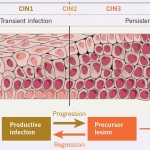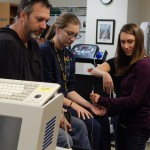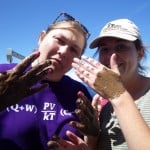
 Dr. Thomas Werner and Dr. Xiaoqing Tang are featured in two separate articles in the last couple of week in the Michigan Tech Lode.
Dr. Thomas Werner and Dr. Xiaoqing Tang are featured in two separate articles in the last couple of week in the Michigan Tech Lode.
The article on Dr. Werner’s research titled “Inside Look: Fruit Flies, Color Patterns and Cancer” can be found in the 8 October 2015 issue.
The article on Dr. Tang’s research titled: “Solving the mystery: what connects microRNA and proteins to the pancreas” can be found in the 1 October 2016 issue.
 The First Annual Research Forum sponsored by the Life Science and Technology Institute was held Sept. 24 and 25. Twenty-seven graduate and undergraduate students conducting research in life science, biotechnology, human health and related areas presented posters.
The First Annual Research Forum sponsored by the Life Science and Technology Institute was held Sept. 24 and 25. Twenty-seven graduate and undergraduate students conducting research in life science, biotechnology, human health and related areas presented posters.
 Joseph Wagenbrenner (SFRES/GLRC), is the principal investigator on the project Informing Great Lakes Connectivity Decisions: An Enhanced Online Portal for High-Resolution Barrier Data and Species-Specific Benefit Analysis, that has received a $42,105 research and development grant from the University of Wisconsin.
Joseph Wagenbrenner (SFRES/GLRC), is the principal investigator on the project Informing Great Lakes Connectivity Decisions: An Enhanced Online Portal for High-Resolution Barrier Data and Species-Specific Benefit Analysis, that has received a $42,105 research and development grant from the University of Wisconsin. 


 “Where Do Young Lake Sturgeon Go After They Hatch? A Close Inspection of River Habitat.” Features research conducted by
“Where Do Young Lake Sturgeon Go After They Hatch? A Close Inspection of River Habitat.” Features research conducted by 

 Congratulations to Dr.
Congratulations to Dr.